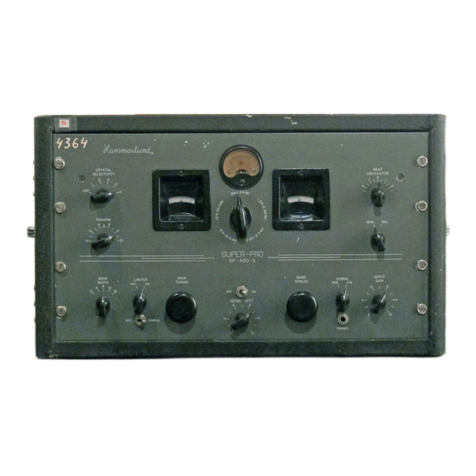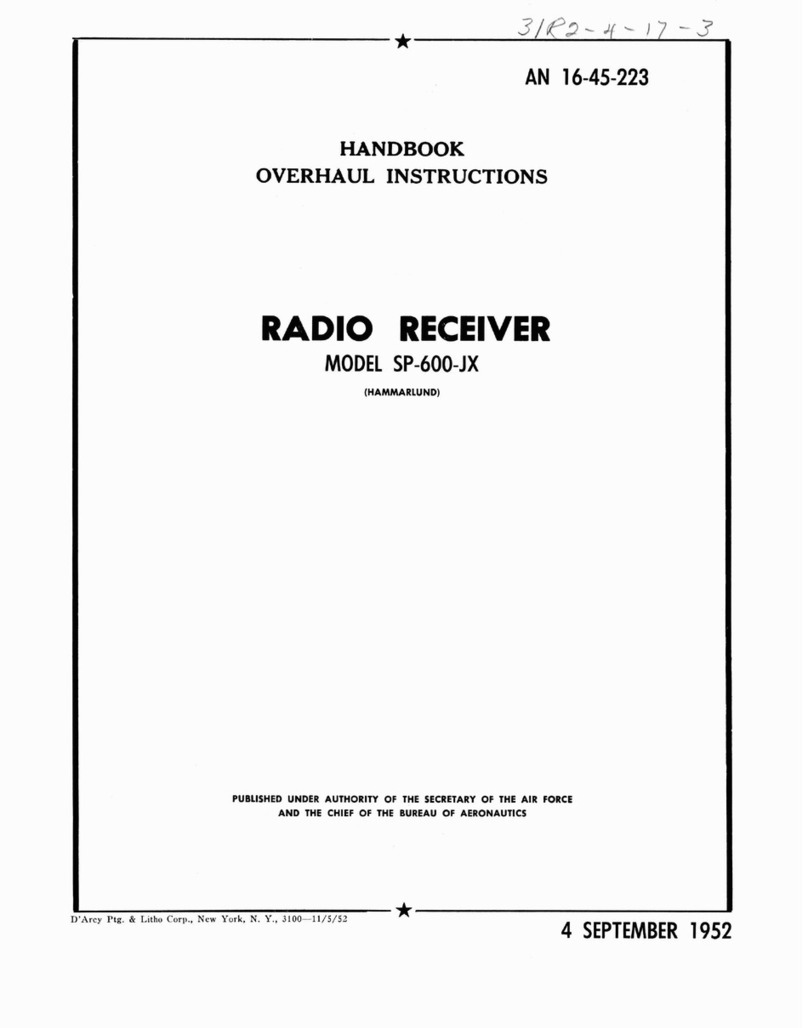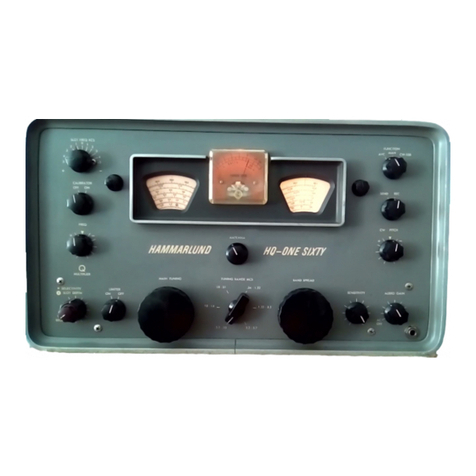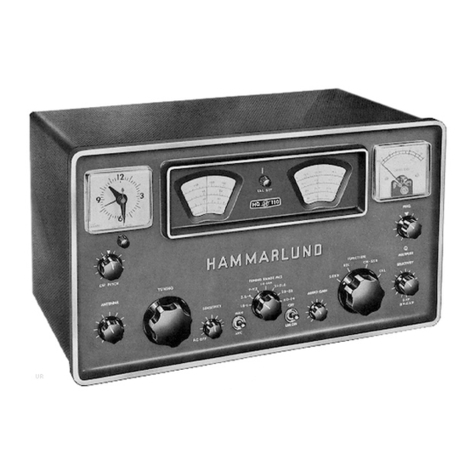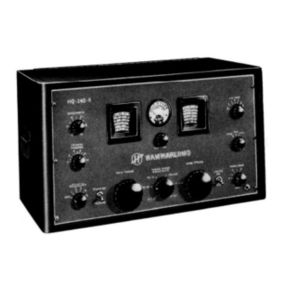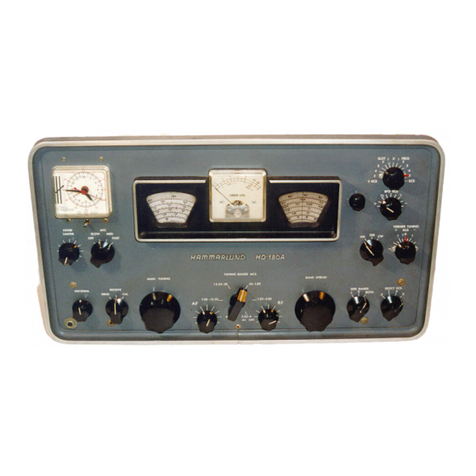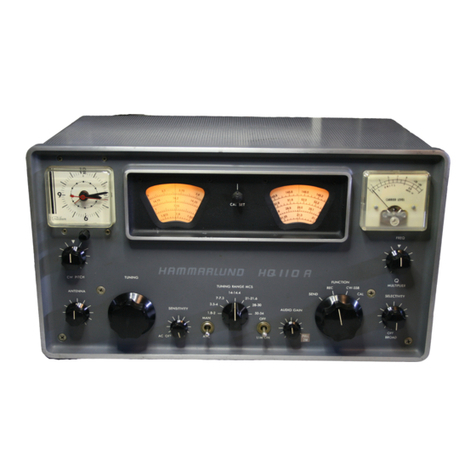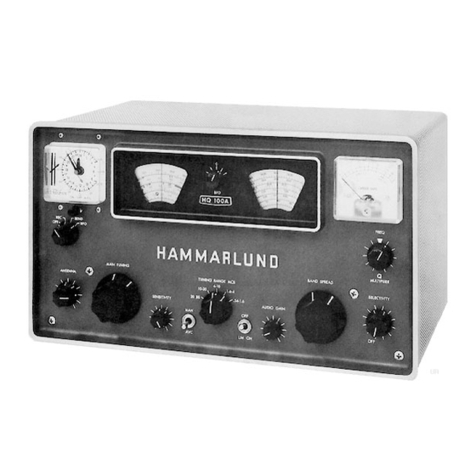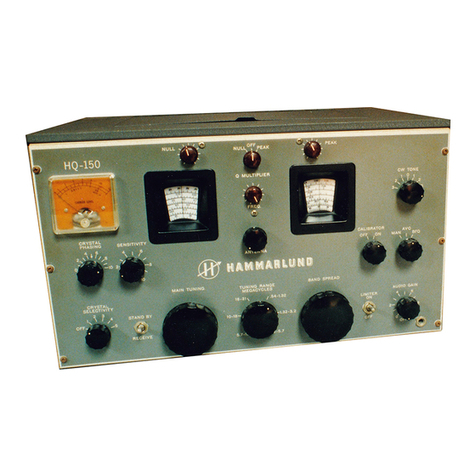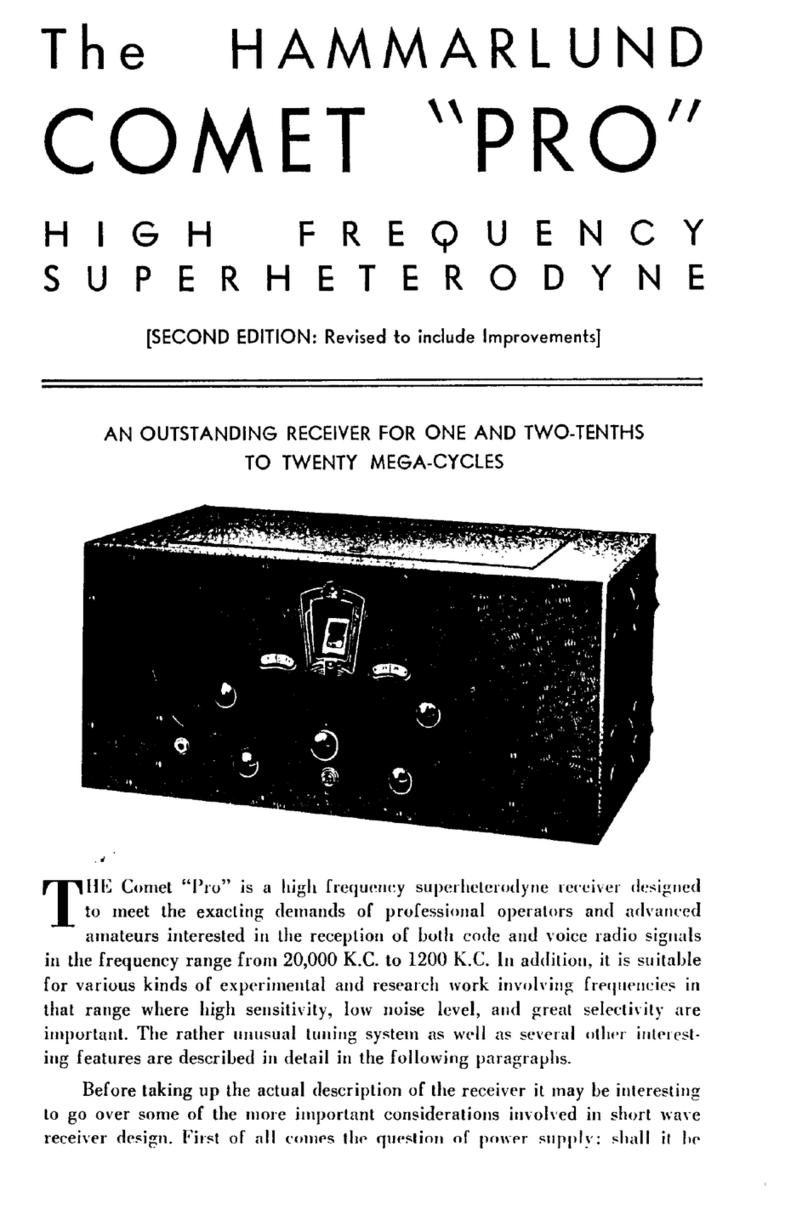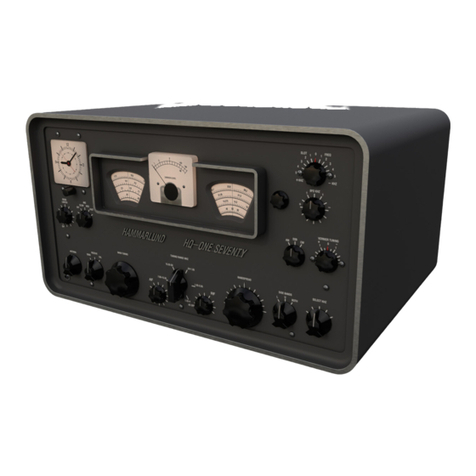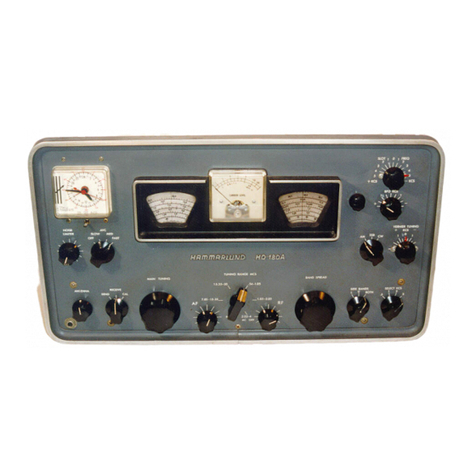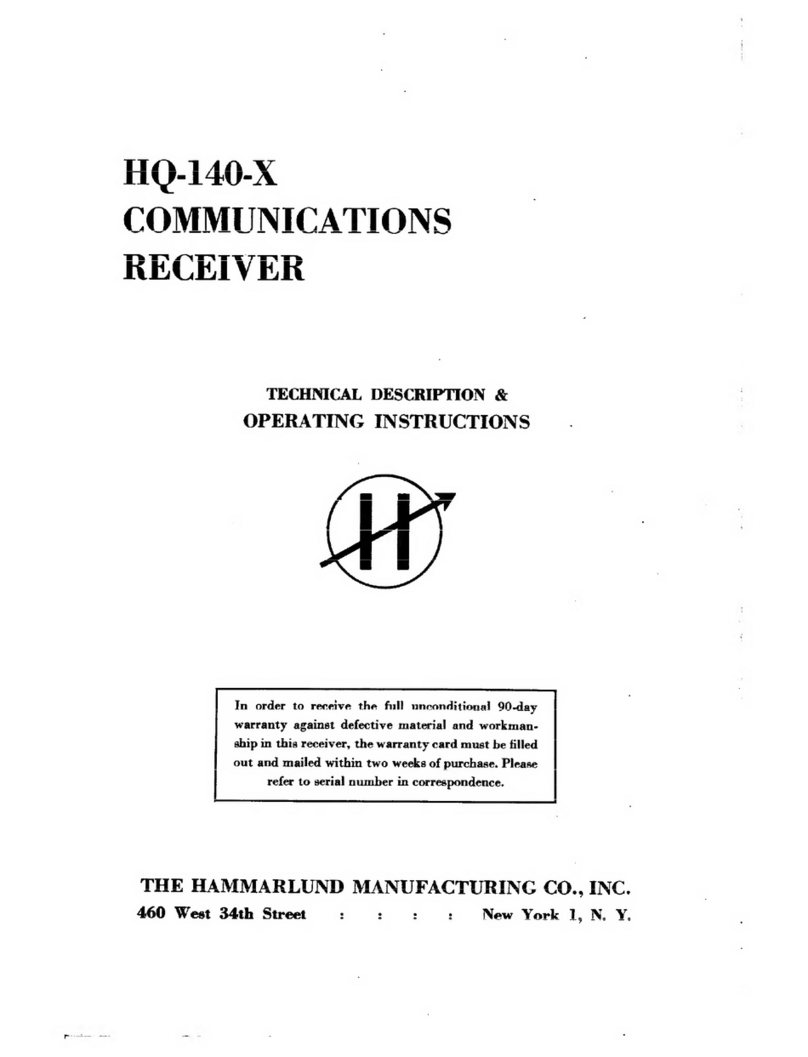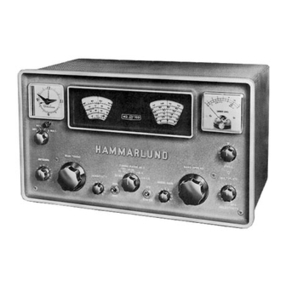T.O.
31R2-4-101-3
Section
Ill
Paragraphs
3-1
to
3-10
SECTION
III
MAINTENANCE BEYOND CAPABILITIES OF FIELD
3-1.
GENERAL.
3-2. The specialized maintenance and repair activities
within the scope of depot overhaul are based on receiver
trouble-shooting procedures supplementary to those pro-
vided in the applicable handbook of service instructions.
The data are useful in the step-by-step procedures used
to determine specific circuit failures.
3-3. Before resorting to the specialized maintenance and
repair procedures, ascertain whether the receiver fault
is due to any of the following causes:
a. Damage or miswiring.
b. Short circuits between parts or to ground, prior or
subsequent to the reassembly of the subassembly or part
to the receiver.
c. Faulty parts whose fault is only evident when the
part has been allowed to warm up by turning the
receiver on.
3-4. All of the receiver circuitry, apart from that con-
tained in the r-f strip, is accessible. When the receiver
fault is isolated to the r-f strip, the subassembly must be
L
removed from the receiver for repair or replacement. To
determine the specific cause of the r-f strip failure re-
quires part-by-part analysis to isolate the faulty part. The
r-f strip removed for repairs may be externally recon-
nected to the receiver through means of insulated test
clip leads, to render accessible its circuitry for purposes
of analysis. When this is done, do not attempt to recon-
nect the four-gang variable tuning capacitor unless it too
is external to the receiver. The r-f tuners for the fre-
quency band desired may be seated in the r-f strip steatite
base
"V"
contacts.
I
WARNING
Keep the receiver turned off when externally
reconnecting the r-f strip to the receiver.
3-5.
SPECIALIZED MAINTENANCE PROCEDURE.
3-6. The specialized maintenance procedure outlined
in each of the following categories differs from that
outlined in the handbook of service instructions. The
-
/
extent of difference is that the parts in subassemblies are
all analyzed while contained in the receiver which is
turned on and a1lowed.a warm-up period of at least five
minutes.
3-7.
RESISTOR
FAILURE.
To determine whether a
resistor is normal, determine first its circuit function,
noting whether it is isolated or whether it has a d-c
voltage drop across it. If the former, determine first,
utilizing a volt-ohmmeter, that it has no d-cvoltage across
it, possibly due to the failure of its associated isolating
capacitor, and then measure its resistance. Turn the re-
ceiver off to measure the resistance of any resistor. To
measure the resistance of resistors R32, R33, R48, R53,
R60, R61, R66, R68, R93, R94, R95, R96, R97, R111,
and R112, unsolder one resistor lead to isolate the resis-
tor from the resistor network of which it is part.
3-8. CAPACITOR FAILURE. To determine whether
a capacitor is abnormal, i.e. open, shorted, or leaky,
determine first its circuit function, noting whether it is
used for d-c voltage isolating or filtering purposes, for
tuning purposes, or to provide a low-impedance series
or shunt path for the signal itself.
3-9.
OPEN CAPACITOR. An open capacitor cannot
provide a low-impedance path for the signal, be used to
tune a circuit to resonance, or cannot provide filtering
action. However, it will keep a circuit isolated. In the
isolating instance, the capacitor usually carries the signal
or other a-c voltages across it so that an open capacitor
can always be analyzed with regard to its circuit function.
To do this, apply an appropriate signal to the applicable
test point so that the capacitor under consideration, if
normal, may perform its function; utilize an a-c vacuum-
tube voltmeter or a cathode-ray oscilloscope indication to
determine whether .the capacitor is open. Each of the
following circuit indications, as applicable, provides for
checking an open capacitor.
a. When the capacitor is in series with the signal path
of the receiver, but open, its input signal indication is
much higher than its output signal indication, to ground
in each instance.
b. When the capacitor provides a return path to
ground for the signal, but is open, its ungrounded ter-
minal is at an a-c voltage level above ground.
c. When. the capacitor is used to tune a circuit to
resonance, but is open, the circuit inductance cannot be
adjusted for resonance.
d. When the capacitor is used to provide audio filter-
ing action, but is open, its ungrounded terminal will
provide indication of excessive ripple, as compared to
when the open capacitor is shunted by a normal capacitor.
e. When the capacitor is used to provide decoupling
action in r-f circuits, but is open, more signal indication
may be observed across its terminals, as compared to
when the open decoupling capacitor is shunted by a
normal capacitor.
3-10. SHORTED CAPACITOR. A shorted capacitor
may be rapidly identified because it cannot have a d-c

